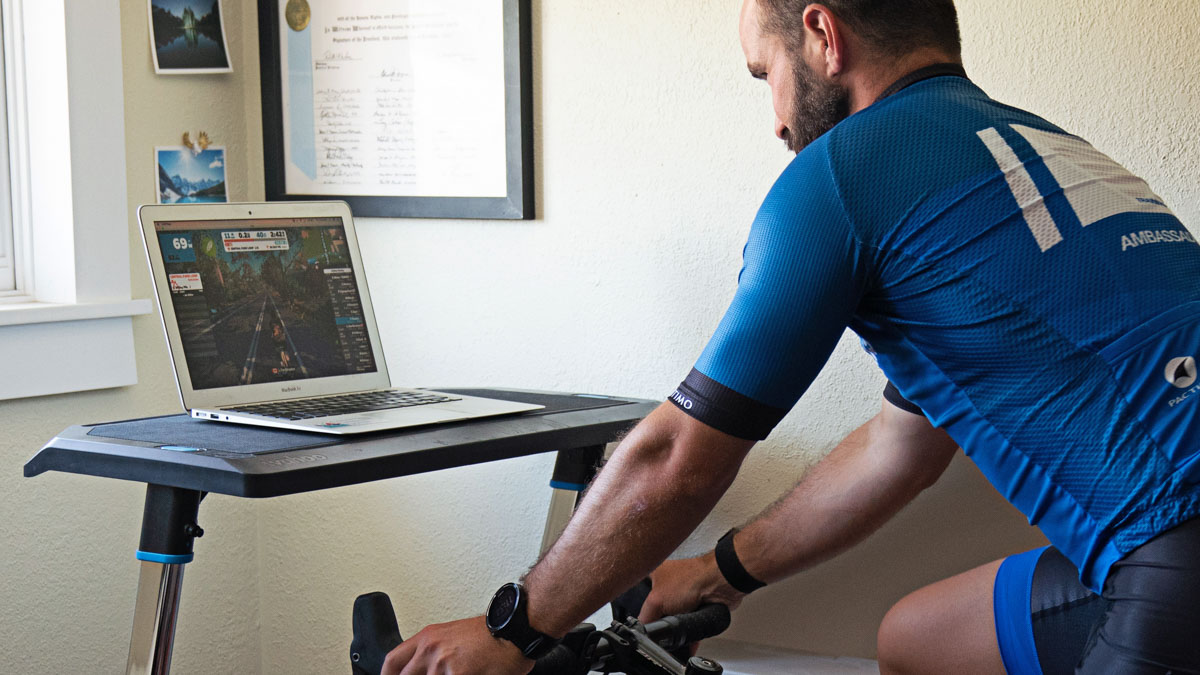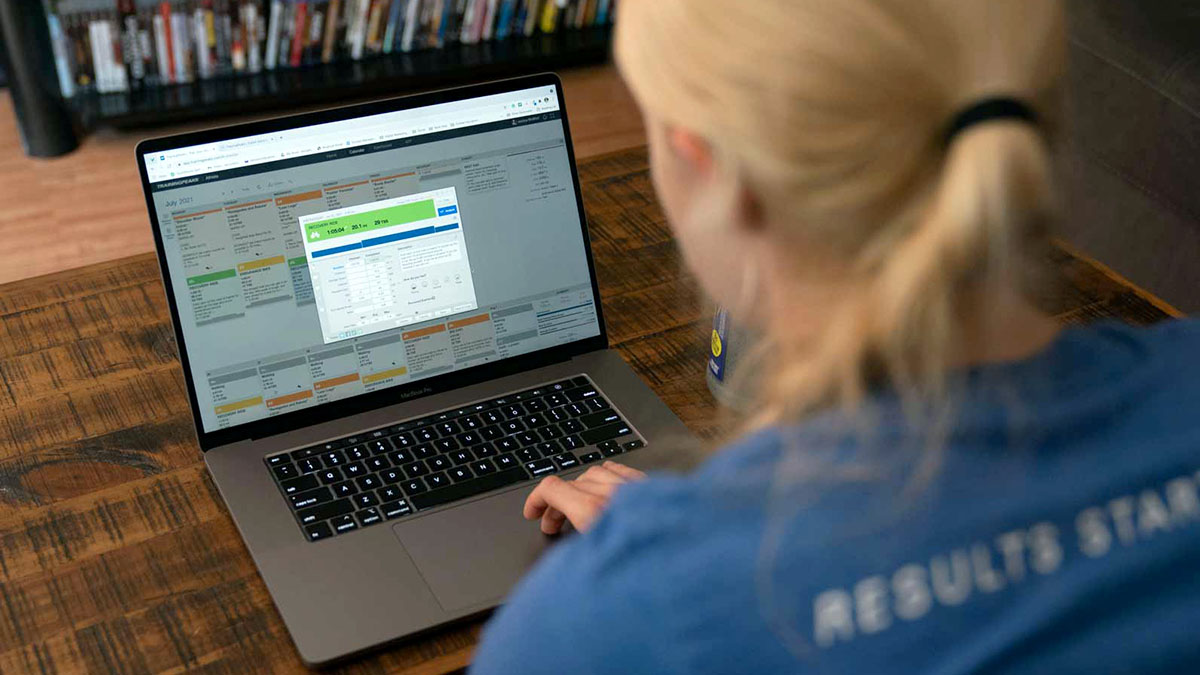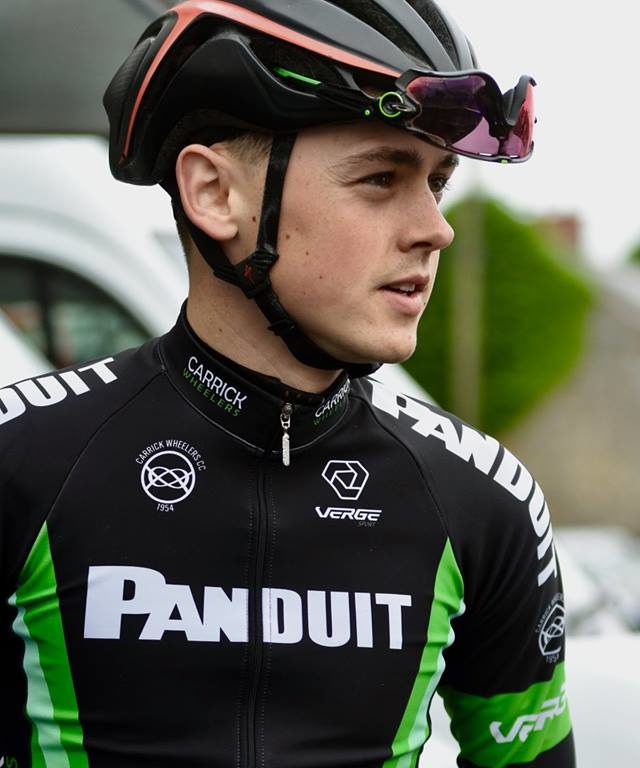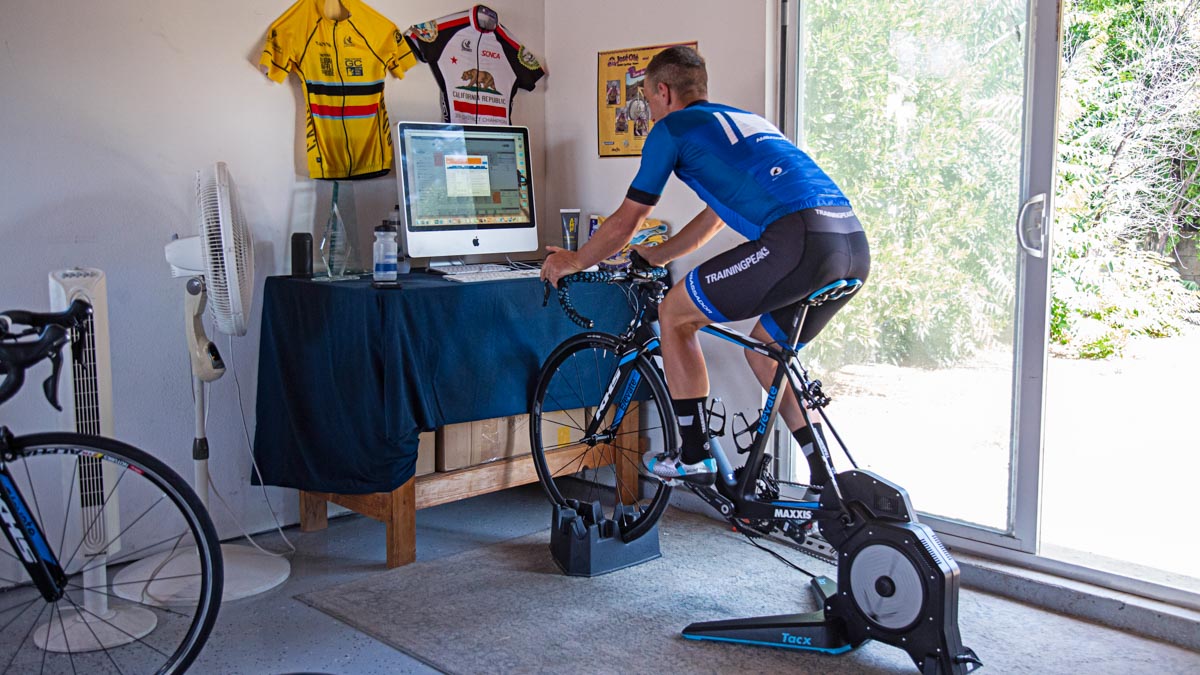It’s that time of year for us in the northern hemisphere, the nights are long, and the turbo trainer sessions feel even longer. A trainer is a great tool. It allows athletes to stick to the plan and train regardless of weather, completing structured workouts and FTP tests. But it can also be so boring that one hour feels like 10, and one interval feels like 20. It doesn’t have to be this way! With a few key changes, you can help your athletes take their turbo sessions up a notch in terms of engagement, enjoyment and, ultimately, performance gain!
Go Virtual
Zwift and other applications make turbo training more engaging than ever. Have them hook their smart trainer up, plug in a workout and follow the onscreen instructions–it’s really that simple. They can feel resistance change with the gradient, ride with friends and even compete in virtual races.
Virtual riding plays on our sensory engagement and how we focus on a specific stimulus. Often, the more involved we are with a certain stimulus, the less attention we pay to the effort level or action we are currently doing!
Zwift also plays on the social facilitation theory, whereby our performance improves when another person is completing the same task at the same time. Research also shows cycling performance improves when subjects face head-to-head competition. It’s reasonable to assume that this virtual competitor you’re racing on Zwift would be a great competitor in reality, therefore playing to our competitive nature as endurance athletes.
Get Social
Organizing a local indoor training group with your athletes is a great way to pass the winter months. Nominate one leader each week to choose a workout and have each person follow along. This social element can really help your athletes get a lot out of their workouts!
Set a Goal
The importance of goal setting cannot be understated. In this piece, I wrote about motivation, we touched on goal-setting and its importance to our motivation as athletes. These same points ring true for turbo trainer sessions. Help your athletes establish a goal for each one–be that recovery or building threshold power. They need to know the ‘why’ of what they’re doing! Once they know the ‘why,’ the sessions become a concrete part of the training process.
Controlling the Environment
Ensure your athlete’s environment is suitable for performance. By this, I mean cooling, ventilation, space, general equipment set-up, and access to distractions. If their environment is set up properly, then they minimize any possible excuses to not hit it hard during the workout. Simply put, make sure they’re training in a cool, well-ventilated area with plenty of space for their training set-up. If they’re going to be on the trainer every night, it may be a good idea for them to create a semi-permanent training space so they can hop on and off with minimal setup.
Get Creative
Don’t be afraid to get creative with sessions! Ask your athletes to try different warm-ups, interval lengths, recoveries, cadences, etc. Some variations I include are micro-intervals and fluctuating work through various zones. Research shows cyclists are able to sustain higher fractions of VO2 max while completing varying intensity HIIT sessions over constant workload settings. In practice, this looks like starting an interval with a burst at 110% of LT Power, settling in at 100% and fluctuating up and down a handful of percentages every few minutes or even every couple of seconds. The world is your oyster!
Varying intensity is something I’ve used to great effect with elite time trial athletes. For example, on a build to this year’s World U-23 Time Trial Championships, one of my athletes and I broke our pacing strategy down into segments. We replicated each segment using erg mode on a smart trainer. These sessions included bouts at goal TT power, raising above it for 3-4 minute stints, replicating climbs and arriving below it for the descents. Yes, we can get similar adaption with a constant work effort, but this way decreases training monotony and helps pass the time quickly.
Summary
Hopefully, this gives you some insight into how to make indoor sessions more enjoyable and engaging. We are blessed with the amount of technology we have at our fingertips. When used correctly, there should be no issues with boredom on trainers. Remember, winter miles equal summer smiles — even if those miles are logged indoors.









